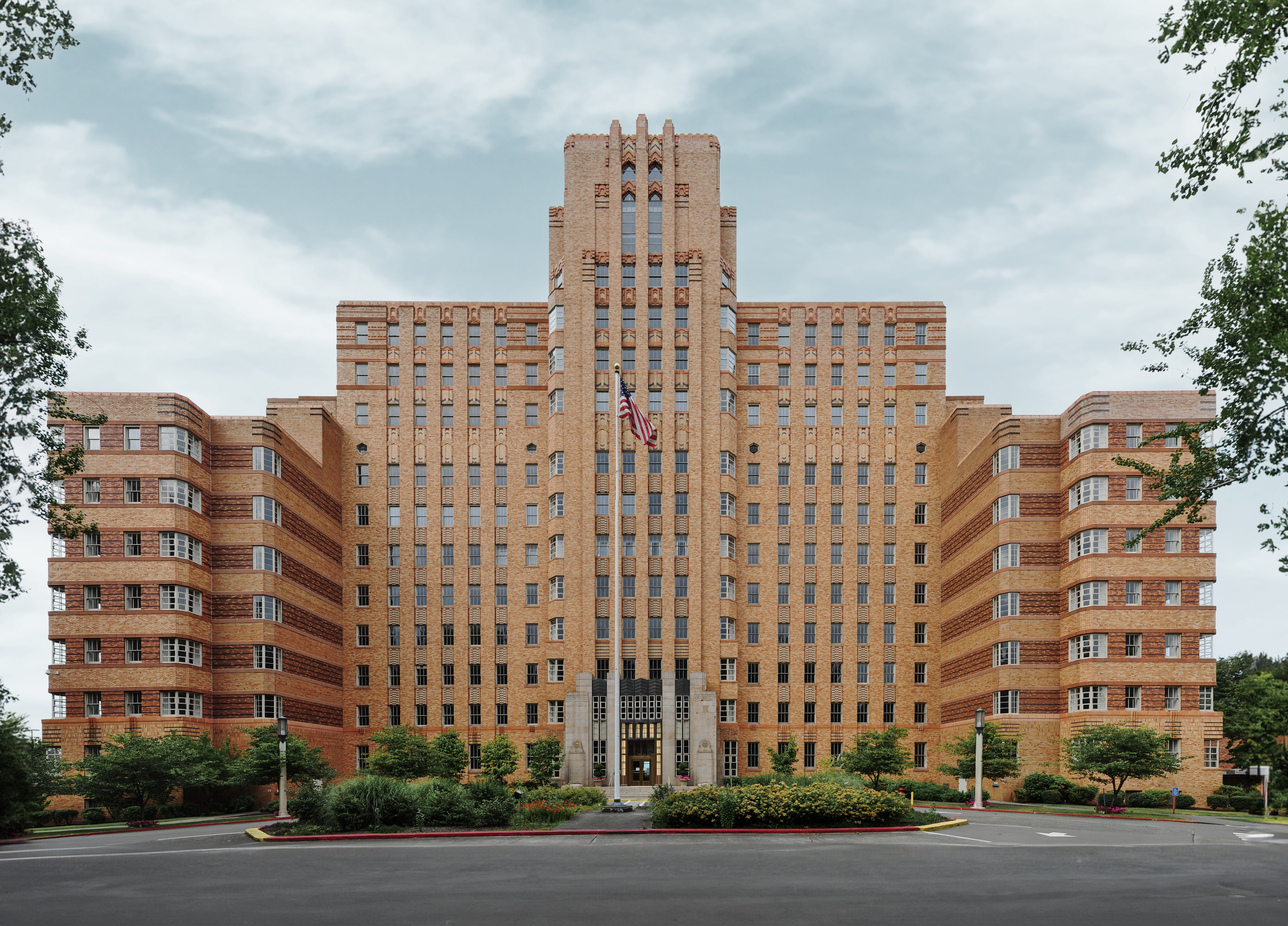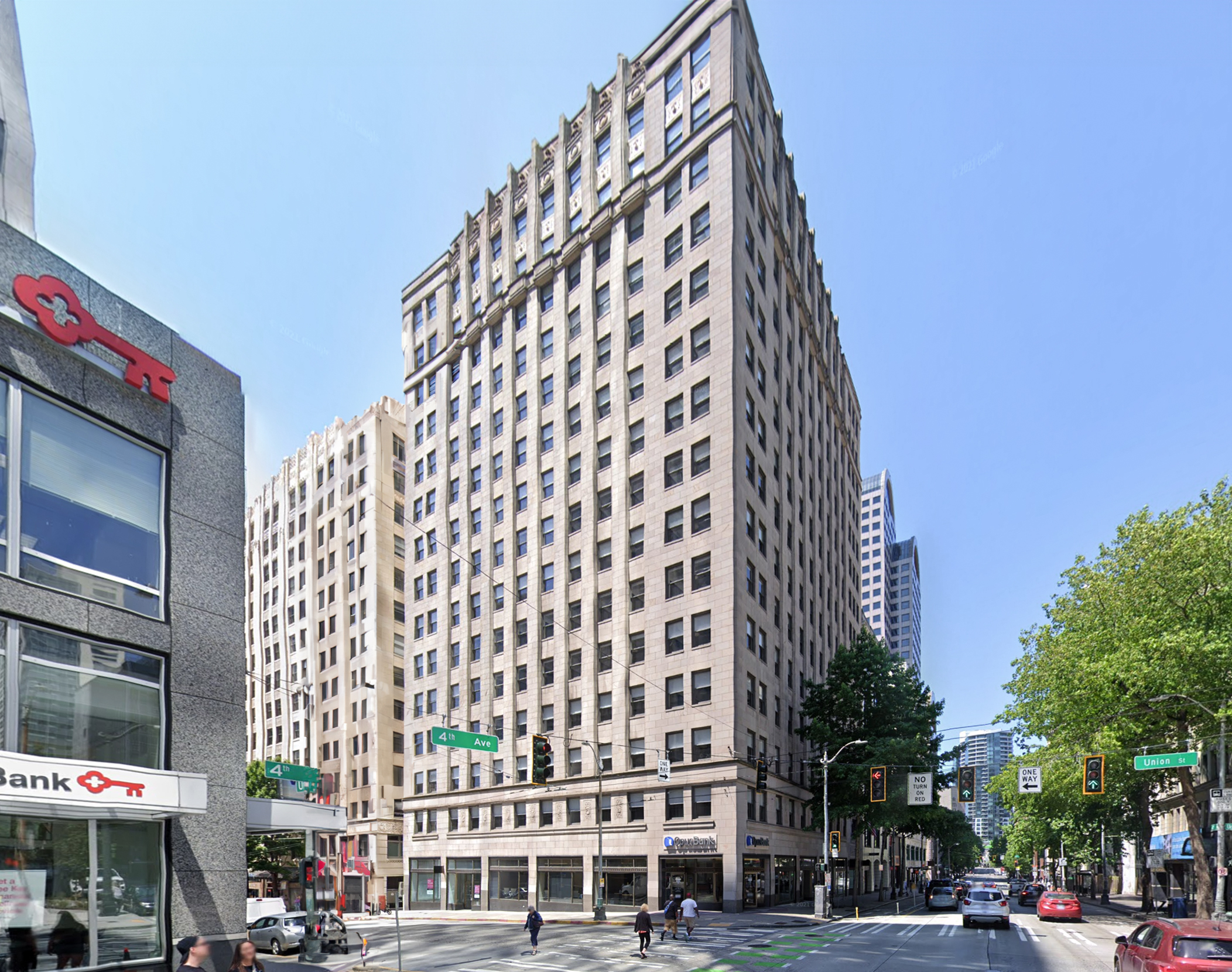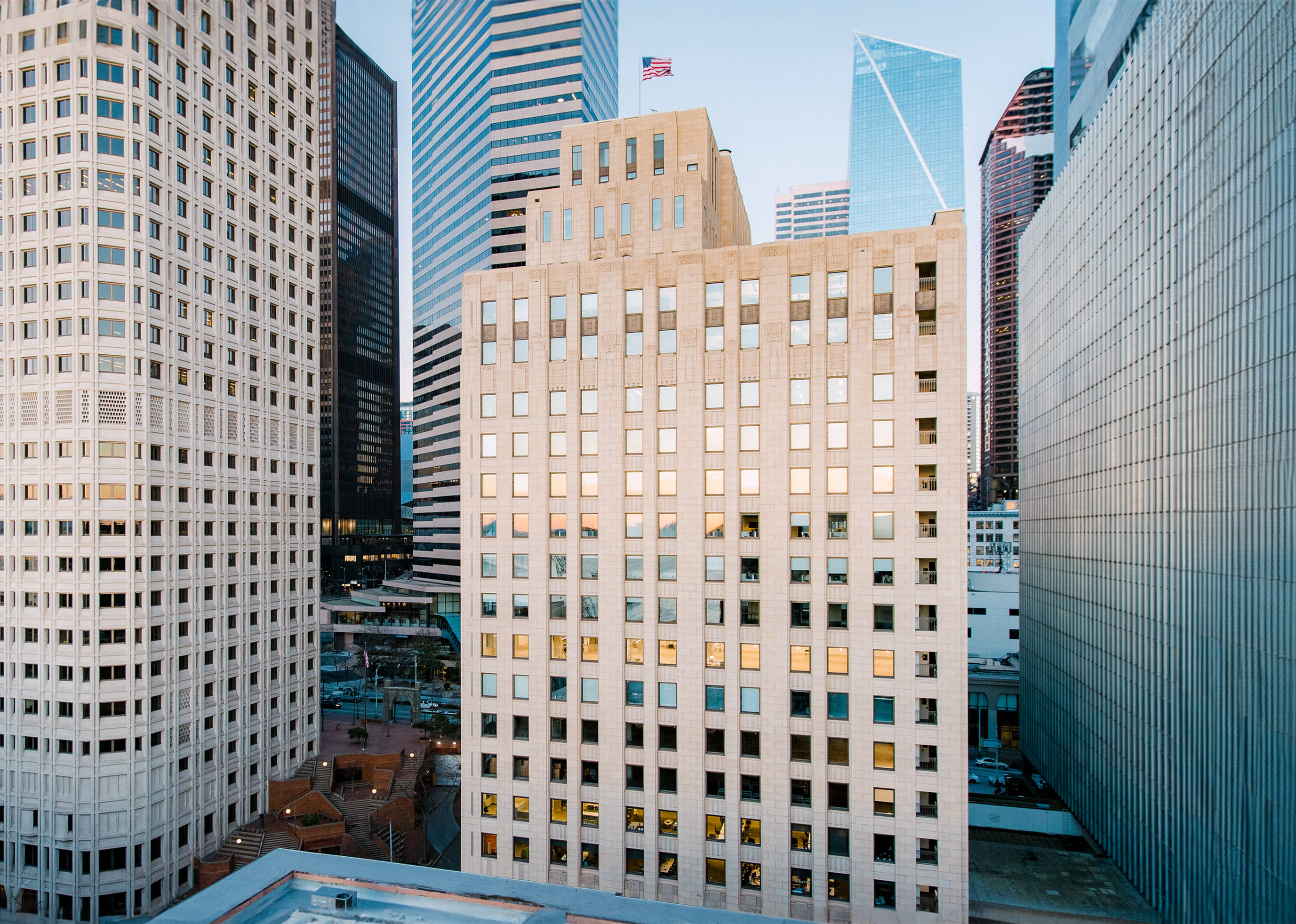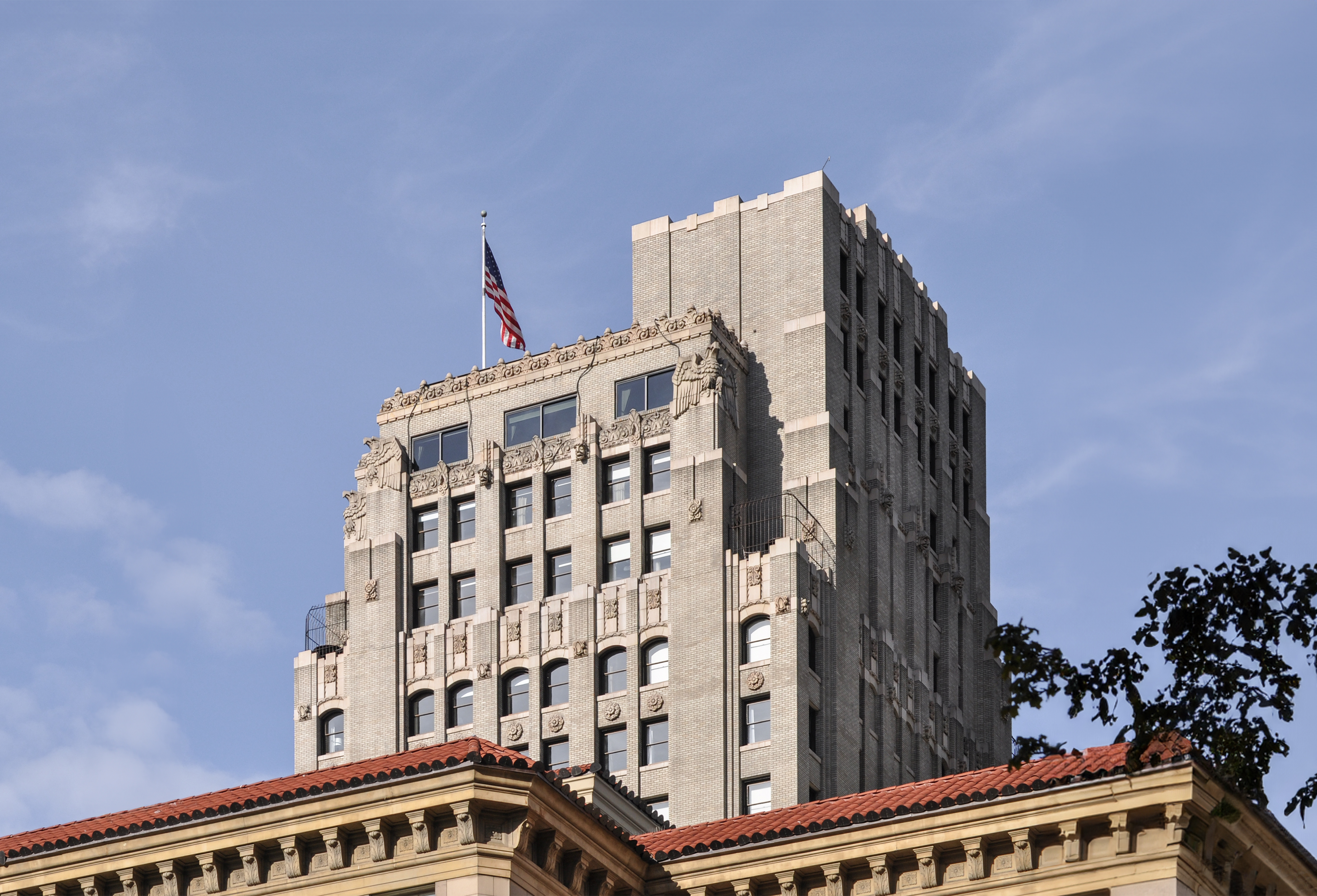The Pacific Tower is an Art-deco skyscraper designed by Bebb & Gould, and built in 1933 in Seattle, WA.
Pacific Tower is not the only name you might know this building by though. It is common for companies to want to attach their names to iconic buildings when they move in, or for the general public to come up with nicknames, and this one is no exception. The building has changed names several times over the years, and is also known as:
- US Marine Hospital between 1933 and 1983.
- Pacific Medical Center between 1983 and 1985.
- Preservation and Development Authority between 1985 and 1991.
- PacMed Building between 1991 and 2003.
- Pacific Hospital from 2003 until this day.
Its precise street address is 1200 12th Avenue South, Seattle, WA. You can also find it on the map here.
The Pacific Tower is a structure of significant importance both for the city of Seattle and the United States as a nation. The building embodies the distinctive characteristic features of the time in which it was built and the Art Deco style. Because of that, the Pacific Tower was officially included in the National Register of Historic Places on December 21st 1979.
The building has been restored 6 times over the years to ensure its conservation and adaptation to the pass of time. The main restoration works happened in 1953, 1975, 1980, 1994, 2001 and 2022.





